9 Top Stops on Our President's Journey by Private Plane to Africa
Our learning adventures by private plane offer unforgettable experiences on once-in-a-lifetime journeys. The private plane makes traveling across continents seamless, while our extensive itineraries allow you to check multiple items off your must-see list on one trip. As our president, James Moses, writes, “Each journey is crafted to provide unparalleled educational opportunities as you engage with our most knowledgeable instructors, local scholars and fellow travelers who share your passion for learning.”
What are these educational opportunities? Here are nine of the stops along our exciting President's Journey by Private Plane to Africa!
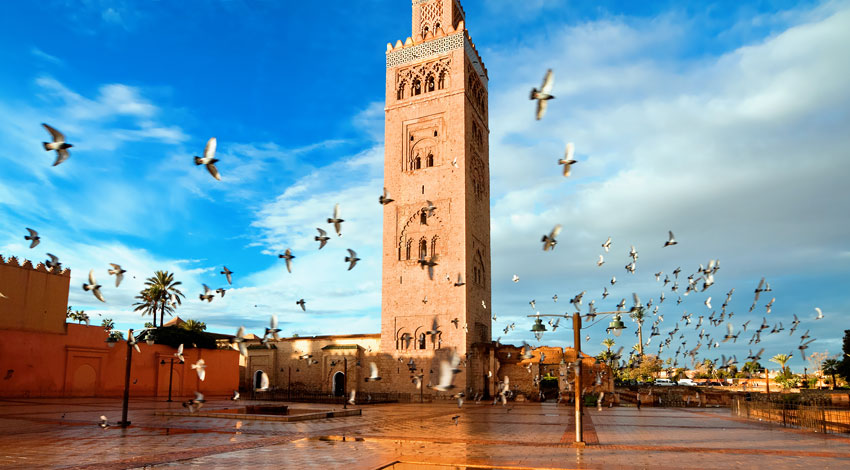
1. Marrakech
Your first stop on the African continent is Morocco, where you’ll explore the “Pearl of the South,” Marrakech. The city is home to many treasures, including the 19th-century Bahia Palace and the 12th-century esplanade of the Koutoubia Mosque, considered to be the most famous religious monument in Marrakech.
One of these treasures is Le Jardin Secret, which is located inside the old city. An afternoon visit to this garden will showcase its extensive restoration and 16th-century roots. Take a moment to stop and smell the exotic plants from across the world and experience the site’s more orderly side as an Islamic garden. Later in the afternoon, continue your feast for the senses at Jemaa el-Fna Square, where you’ll find the largest traditional market in Morocco bustling with musicians, dancers and more!
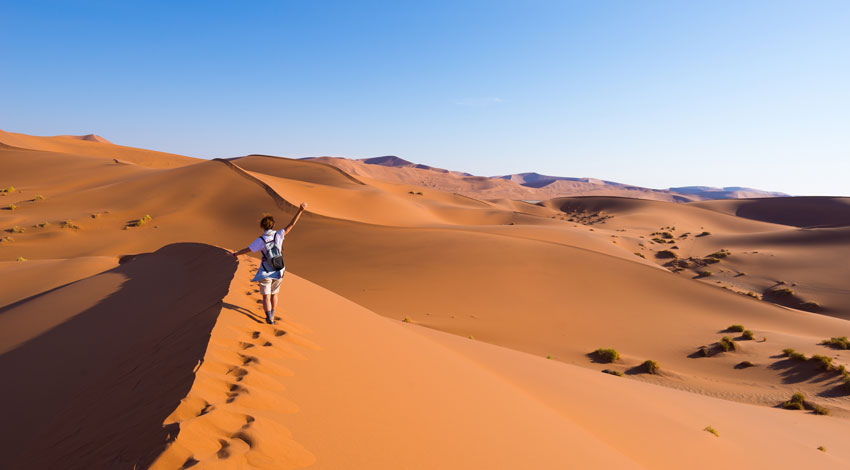
2. Namib Naukluft National Park
One of the largest game parks in the world, Namib Naukluft National Park runs along the western coast of Namibia. An early morning will find you at the Sossusvlei Dunes, some of the highest free-standing sand dunes in the world. These dunes will serve as an illustration of the sand that contrasts with the white clay pan that forms the Namib Desert. Your Group Leader will tell you more about this ecosystem and the animals and plants that make their habitat in this desert.
You’ll then go from desert to river landscapes at the Sesriem Canyon, formed through erosion by the Tsauchab River and a landmark of historical significance. A nature drive on the Park’s lodge reserve will cap off a day filled with natural marvels.
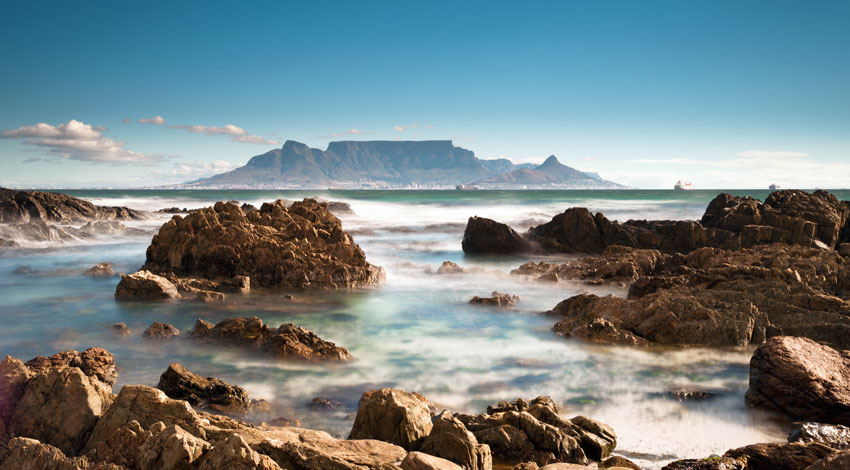
3. Table Mountain
Table Mountain is a magnificent natural wonder rising over 3,500 feet above sea level. The mountain gets its name from it flat top, which stretches almost 10,000 feet wide and was created by natural development over millions of years.
Take a cable car up to the summit of the mountain and admire fantastic views of the surrounding area and steep granite slopes. The cableway itself offers a fascinating history, dating back to 1929, with the mountain’s relationship with indigenous communities going back much further. You’ll learn more about this human history and the jaw-dropping natural features of the area, which is both a national park and part of a UNESCO World Heritage Site.
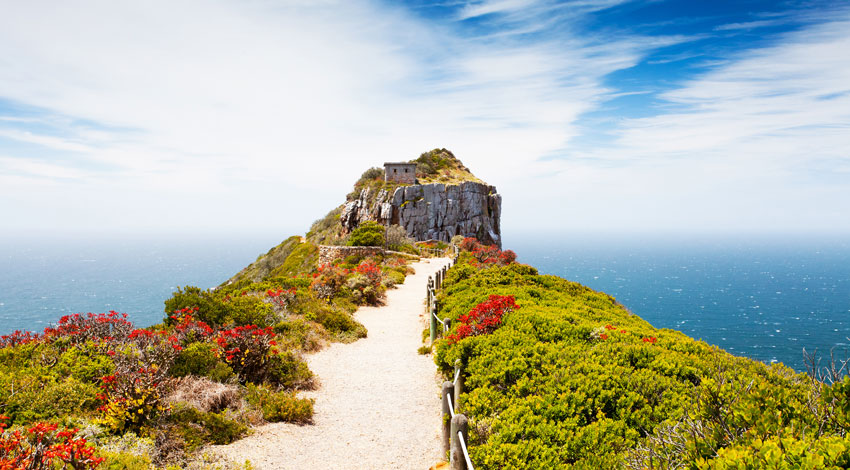
4. Cape Point & Boulders Beach
Also located in Cape Town, South Africa, Cape Point and Boulders Beach are two areas famed for their natural importance. Your drive to these points will follow the ocean on one of the most spectacular coastal roads in Africa. Once there, board the Flying Dutchman funicular, a mountainside railroad operating by cable, to reach a viewpoint walkway along the peak of Cape Point, the southwestern-most point of the African continent. Enjoy views of rocky mountains jutting out into the ocean’s crashing waves while searching for whales, penguins and seals.
Speaking of penguins, an afternoon trip to Boulder Beach will offer a special opportunity to view the resident African penguin colony. Follow a local specialist along a sheltered beach to learn more about this vulnerable bird and observe them closely in a protected environment.
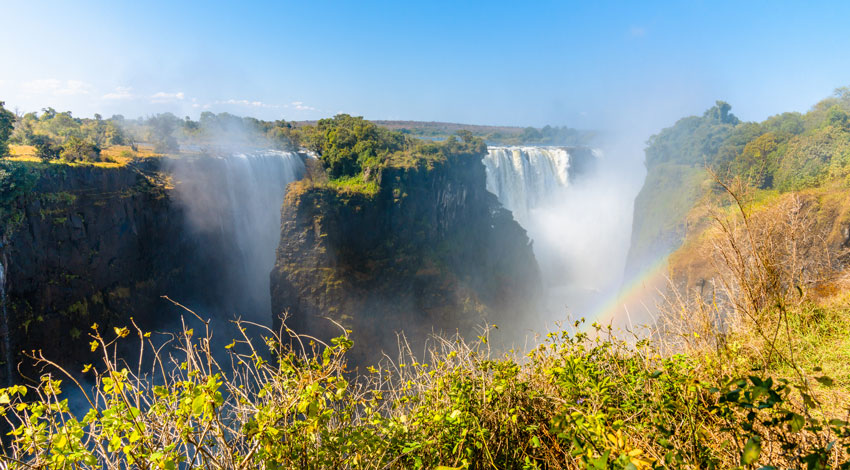
4. Victoria Falls
It’s an astounding site that’s on many must-see lists — Victoria Falls, a UNESCO World Heritage Site, marks the next stop on your journey across the African continent! The Zambezi River, the fourth largest river in Africa, rushes over this spectacular waterfall, which sits on the border between Zambia and Zimbabwe.
On your first afternoon, you’ll view the falls from the Zimbabwean side and learn how this natural wonder has been formed through the millennia. The next day, visit the Victoria Falls Wildlife Trust to learn about local conservation and research efforts and tour the wildlife rehabilitation area. Your time along the river will come to its conclusion with a sunset boat ride on the Zambezi to search for numerous birds, including herons, storks and egrets.
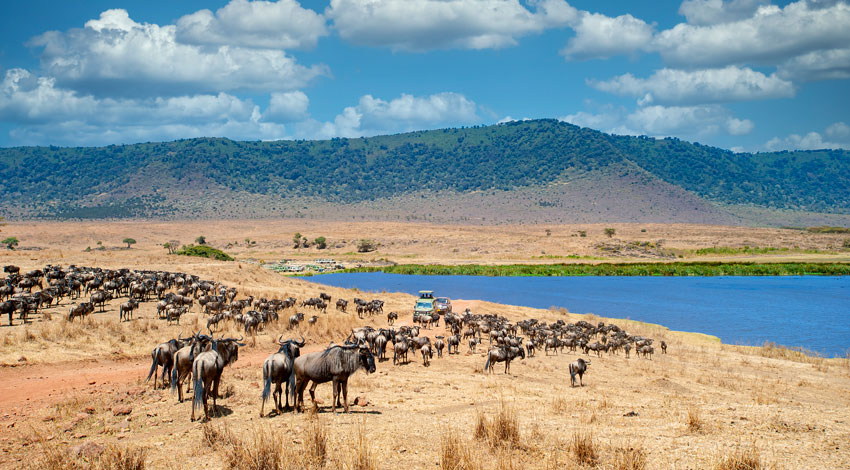
5. Ngorongoro Crater
The Ngorongoro Crater is part of a UNESCO World Heritage Site and is the world’s largest intact volcanic caldera. Its location in Tanzania is your next destination, where you’ll embark on safari to search for the wide variety of animals that call this crater home. Local specialists will call out animals and sites that you pass along the way while you keep your eyes open for iconic wildlife such as elephants, rhinos and zebras, as well as flamingos and other birds. You’ll also discover the rich ecosystems throughout the crater, including grasslands, swamps, rivers and a large soda (alkaline) lake. Finish your time in this special place with a gathering on the crater’s rim, with breathtaking views of the crater floor, stretching ten miles wide, and its forested walls that rise about 1,950 feet tall.
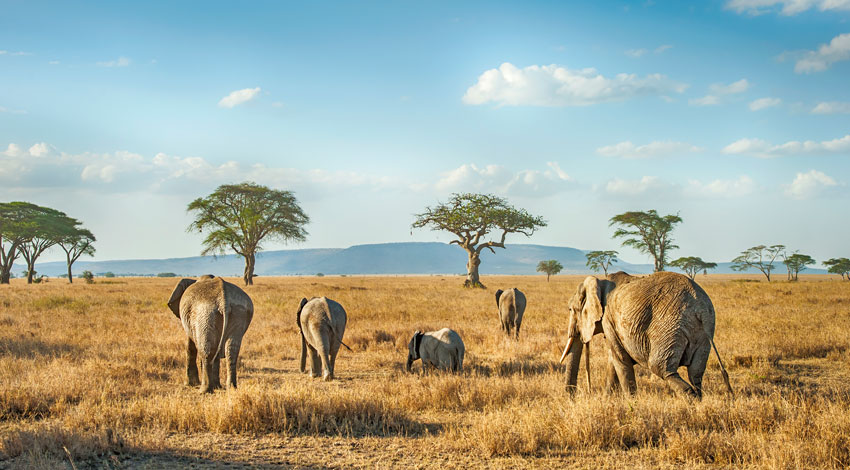
7. Serengeti National Park
Once you reach Serengeti National Park, prepare to be immersed in wildlife — this region is filled with countless animals, including big cats like lions, leopards and cheetahs. Some of these animals are part of the Great Migration, where millions of animals migrate between the Serengeti and Maasai Mara in Kenya. Embark on multiple game drives throughout your time in this UNESCO World Heritage Site, where your animal checklist will include antelope, elephants and buffalo as well as birdlife. To escape the heat of the day, relax in the lodge and enjoy afternoon tea with a specialist, who will delve into local topics.
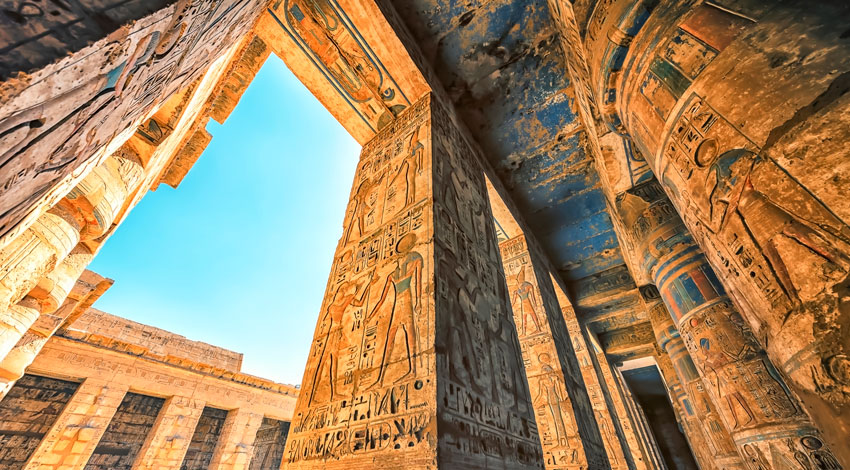
8. Luxor Temple
If ancient Egyptian history is a passion of yours, then you’ll be looking forward to this stop on your journey — the Luxor Temple, also known as “the southern sanctuary.” This site was the center of one of the most important religious festivals in ancient Egypt — the Opet Festival — during which the statues of Amun-Re, Mut and Khonsu were carried from Karnak to Luxor. Walk in the footsteps of history as you explore this temple that dates back thousands of years and discover more about its influence on the ancient Egyptians. This exploration will whet your appetite for a continuing look at Egyptian history on the following day.
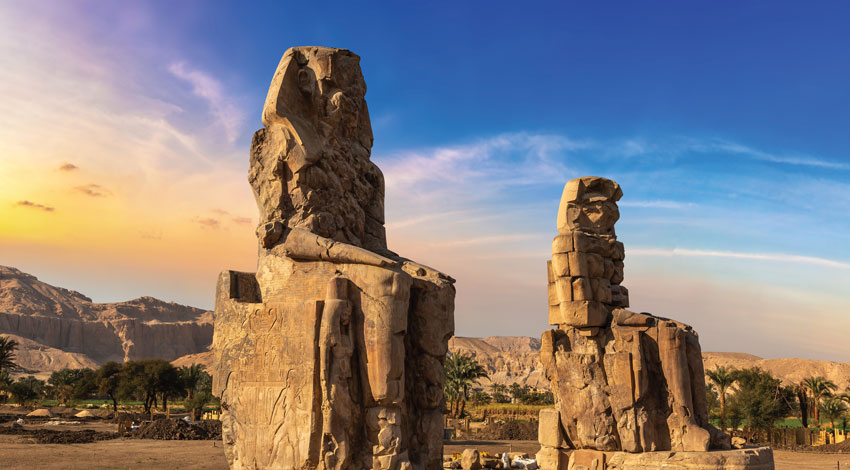
9. Valley of the Kings
One of the last — but certainly not the least — sites along your journey through Africa is the Valley of the Kings. Led by local experts, explore the area that held royal burials dating back to 2100 BCE. The magnificent tombs of the Valley of the Kings are those of the pharaohs of the New Kingdom period (1550-1069 BCE), of which 63 dot the landscape. In addition to these tombs, the Colossi of Memnon stand at what was once the entrance to the Mortuary Temple of Amenhotep III, which was destroyed in an earthquake in 1200 BCE, leaving only the iconic statues. After experiencing thousands of years of history firsthand, a relaxing and educational riverboat voyage on the Nile caps off this unforgettable day and your epic journey throughout Africa.
Want to find out more about our learning adventures by private plane? Go to our website to discover more about this adventure and our President’s Journey around the world!
